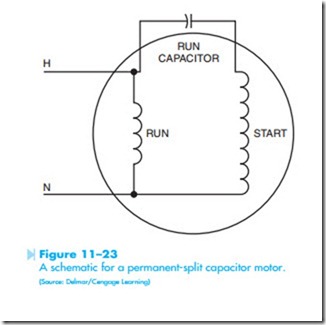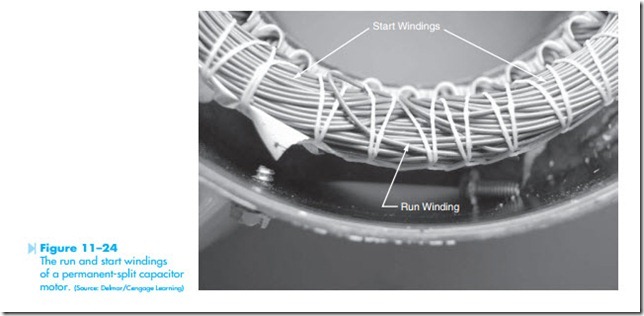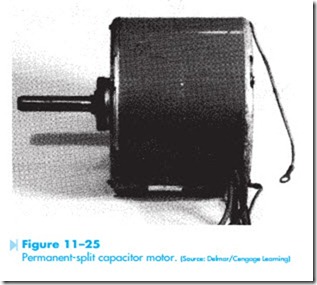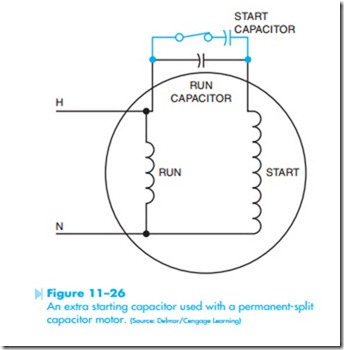MOTOR POWER CONSUMPTION
It should be noted that the motor does not use less energy when connected to 240 volts than it does when connected to 120 volts. Power is measured in watts, and the watts will be the same regardless of the connection. When the motor is connected to operate on 240 volts, it will have half the current draw as it does on a 120-volt connection. Therefore, the amount of power used is the same. For example, assume the motor has a current draw of 5 amps when connected to 240 volts and 10 amps when connected to 120 volts. Watts can be computed from multiplying volts by amps. When the motor is connected to 240 volts, the amount of power used is 240 X 5 = 1,200 watts. When the motor is connected to 120 volts, the power used is 120 X 10 = 1,200 watts.
The 240-volt connection is generally preferred, how- ever, because the lower current draw causes less volt- age drop on the line supplying power to the motor. If the motor is located a long distance from the panel, voltage drop of the wire can become very important to the operation of the unit.
PERMANENT-SPLIT CAPACITOR MOTOR
The permanent-split capacitor motor has greatly increased in popularity for use in the air conditioning field over the past years. This type of split-phase motor does not disconnect the start windings from the circuit when it is running. This eliminates the need for a centrifugal switch or starting relay to disconnect the start windings from the circuit when the motor reaches about 75% of its full speed, Figure 11–23. This motor has good starting 

and good running torque. Because the capacitor remains in the circuit during operation, it helps correct power factor for the motor. The stator winding of the permanent-split capacitor (PSC) motor is different from the stator windings of the resistance-start induction-run or capacitor-start induction-run motors. The PSC motor stator winding still contains a run and start winding, but the start winding will generally have the same size wire and just as many turns as the run winding, as shown in Figure 11–24. The run winding is placed lower in the core material, which helps increase the inductance.
The capacitor used in this type of motor is generally the AC oil-filled type. A photograph of a permanent-split capacitor motor is shown in Figure 11–25. Because this capacitor remains connected in the circuit, an AC electrolytic capacitor cannot be used to replace the run capacitor for this type of motor.
The permanent-split capacitor motor will some- times use an extra capacitor to aid in starting. When this is done, the start capacitor is connected in parallel with the run capacitor. During the time of starting, both of these capacitors are connected in the circuit, Figure 11–26. When the motor has
accelerated to about 75% of full speed, the start capacitor is disconnected from the circuit. If the motor is an open type, the start capacitor will be disconnected by a centrifugal switch. If the motor is sealed, such as a hermetically sealed compressor, the start capacitor will be disconnected by a starting relay.

